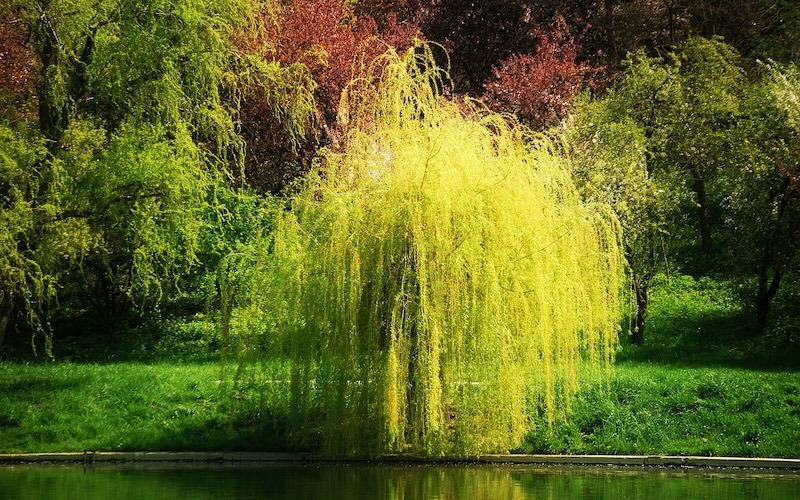Growing Willow
Willows have a distinguished look and add texture to a landscape. These are fast-growing shrubs with unique springtime flowers known as catkins. Lush foliage gives the shrubs a dense appearance, making them excellent for separating different areas or adding privacy. Some cultivars have deep red bark that provides color and contrast in a winter landscape.

Willows belong to the Salix genus and are relatively easy to care for. They thrive in damp areas that may not be suitable for other plants. Native to various regions, including Asia and North America, willows are suitable for growing in USDA Hardiness Zones 3 through 8, depending on the variety.
Planting Willow
Select a planting site in a naturally damp area. Willows grow in marshes, wetlands, or on the banks of streams or ponds. Plant them in rich, well-drained soil because although they like moisture, they do not like overly soggy conditions. Willow shrubs prefer full sun, but they can live in partial sun. Morning sun with afternoon shade is preferred in sweltering climates.

Watering Willow
Willows thrive in damp areas with a lot of moisture, so watering is not often necessary. They can obtain sufficient moisture from the surrounding soil. However, during dry spells, especially in the first growing season as the shrub acclimates, additional watering may be needed. A thick layer of organic mulch will slow water evaporation and keep the roots damp longer.
Fertilizing Willow
Willows are not heavy feeders and do not require fertilization, especially when grown in rich soil. Use a balanced fertilizer annually each spring if the soil is low in organic matter. One dose of fertilizer is enough to help the plants grow and thrive.
Pruning Willow
Prune Willows in late winter while the shrub is dormant. Many cultivars bloom in spring, so prune before flowers emerge. Trim the growth by one-third and remove crossing, damaged, and dead growth. Trimming just before the growing season stimulates growth and promotes a full and bushy form. Prune again in late spring or early summer after the flowers fade to shape the plant. Willows benefit from another trim in late summer or early fall to remove leggy growth and create a more pleasing form.

Caring For Willow in Pots
Growing Willows in pots allows for more flexible placement options. Choose a pot with drainage and use moist, well-drained soil. Container-grown willows will require regular watering to meet their high moisture needs. Water the shrub when the very top layer of soil is just beginning to dry out. Keep the soil consistently moist but not soggy. Place the container in a location that receives full to partial sun, and remember that plants in full sun will require more frequent watering.
Winter Care For Willow
Willows do not need significant winter care. Landscape plants, especially those in the northern reaches of their growing zones, will benefit from a thick layer of mulch, which protects the roots from cold temperatures. When grown in cold climates, container plants should be moved to a protected area during the winter.
Common Reasons Why Willow Isn’t Blooming
Lack of sunlight is the most common reason a Willow does not bloom. These plants crave full sunlight, and while they can live in partial light, they do not grow as big or set as many flowers in low light levels. Select a planting location that receives at least six hours of sunlight. Transplant a Willow that does not receive enough sunlight to a sunnier position, or prune nearby plants that obstruct light.
Willows grow well without much added nutrition, but plants grown in poor-quality soil benefit from fertilization and a layer of organic mulch. Fertilize a Willow that does not bloom in early spring to encourage the plant to set buds. High-nitrogen fertilizers are often recommended for Willows with ornamental leaves because they promote foliage growth.
